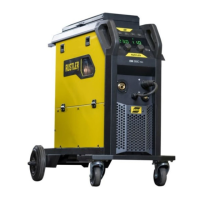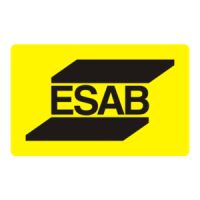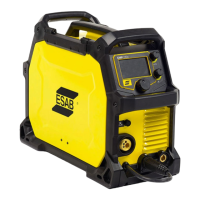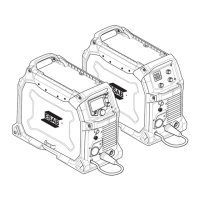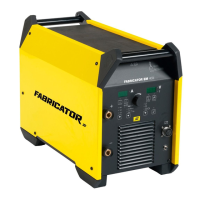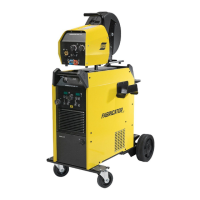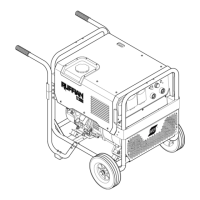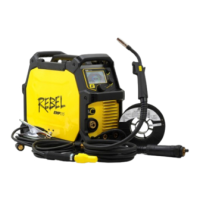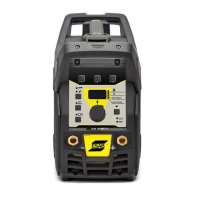1 SAFETY
0463 933 001
- 6 -
© ESAB AB 2023
1 SAFETY
1.1 Meaning of symbols
As used throughout this manual: Means Attention! Be Alert!
DANGER!
Means immediate hazards which, if not avoided, will result in immediate, serious
personal injury or loss of life.
WARNING!
Means potential hazards which could result in personal injury or loss of life.
CAUTION!
Means hazards which could result in minor personal injury.
WARNING!
Before use, read and understand the instruction manual and
follow all labels, employer´s safety practices and Safety Data
Sheets (SDSs).
1.2 Safety precautions
Users of ESAB equipment have the ultimate responsibility for ensuring that anyone who works on or
near the equipment observes all the relevant safety precautions. Safety precautions must meet the
requirements that apply to this type of equipment. The following recommendations should be observed
in addition to the standard regulations that apply to the workplace.
All work must be carried out by trained personnel well-acquainted with the operation of the equipment.
Incorrect operation of the equipment may lead to hazardous situations which can result in injury to the
operator and damage to the equipment.
1. Anyone who uses the equipment must be familiar with:
• its operation
• location of emergency stops
• its function
• relevant safety precautions
• welding and cutting or other applicable operation of the equipment
2. The operator must ensure that:
• no unauthorised person is stationed within the working area of the equipment when it is started
up
• no-one is unprotected when the arc is struck or work is started with the equipment
3. The workplace must:
• be suitable for the purpose
• be free from drafts
4. Personal safety equipment:
• Always wear recommended personal safety equipment, such as safety glasses, flame-proof
clothing, safety gloves
• Do not wear loose-fitting items, such as scarves, bracelets, rings, etc., which could become
trapped or cause burns
5. General precautions:
• Make sure the return cable is connected securely
• Work on high voltage equipment may only be carried out by a qualified electrician
• Appropriate fire extinguishing equipment must be clearly marked and close at hand
• Lubrication and maintenance must not be carried out on the equipment during operation

